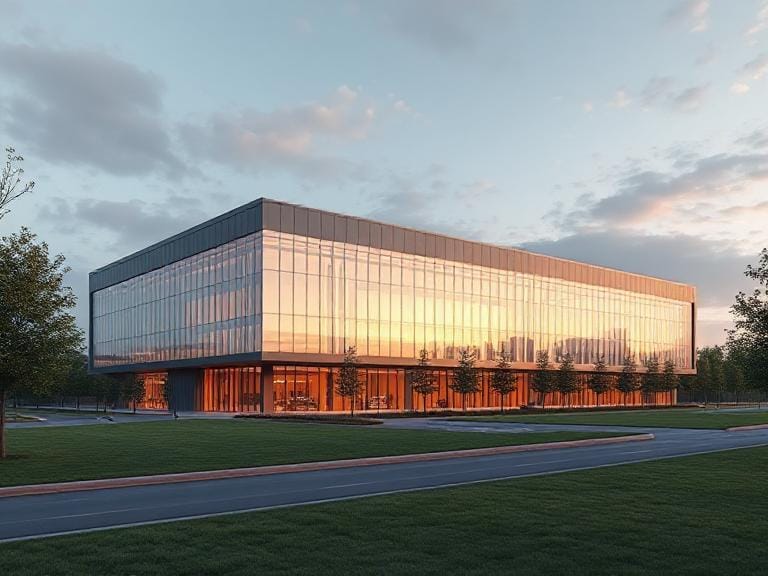How Often Should You Power Wash Commercial Buildings?
Power washing is a cleaning technique that employs high-pressure water spray to remove dirt, grime, mold, and other surface pollutants from various surfaces. It is distinct from standard pressure washing primarily due to the use of heated water, which offers enhanced cleaning power and effectiveness in breaking down stubborn stains and contaminants. This method is particularly beneficial for commercial buildings, where aesthetics and maintenance play crucial roles in attracting customers and preserving property value.
The benefits of utilizing power washing for commercial buildings extend beyond mere appearance; they encompass a comprehensive approach to property maintenance. Regular power washing not only revitalizes the exterior surfaces but also significantly enhances curb appeal. A clean, well-maintained façade can create a positive first impression on clients and customers, enhancing their perception of the business.
Furthermore, power washing contributes to the ongoing maintenance of a commercial property. Accumulated dirt and organic growth, such as algae and mold, can deteriorate surfaces over time, leading to costly repairs if left unaddressed. By incorporating power washing into a routine maintenance schedule, property owners can mitigate the risk of damage and extend the lifespan of critical structures, such as sidewalks, parking lots, and building exteriors.
Additionally, power washing aids in the prevention of long-term issues, such as mold growth and other health hazards. By regularly removing these contaminants, property owners can ensure a safer environment for employees and visitors alike. The practice of integrating power washing into regular maintenance routines is not only a proactive measure but an essential investment in the longevity and integrity of commercial properties.
Factors Influencing Power Washing Frequency
Determining the frequency of power washing for commercial buildings involves several important factors that directly impact cleanliness and maintenance. The location of the building is a significant consideration. For example, structures situated in urban areas may require more frequent power washing due to higher levels of pollution and grime, while those in rural settings might experience less buildup. Additionally, buildings located near coastal areas are often exposed to salt, which can lead to corrosion and discoloration, necessitating more regular cleaning to preserve the integrity of the materials.
Environmental conditions also play a crucial role in establishing a power washing schedule. Seasonal changes can result in the accumulation of pollen, dirt, and debris, particularly during spring and autumn. Buildings surrounded by trees may face increased challenges from falling leaves and sap, which can affect appearance and structure over time. Furthermore, extreme weather conditions, such as heavy rains or snow, can expose surfaces to moisture-related issues, thereby creating a compelling reason for more frequent washing.
The type of building materials employed also informs how often power washing should take place. Different surfaces, such as brick, stucco, and wood, have varying levels of resilience against dirt and staining. For instance, porous materials may absorb pollutants more easily and consequently need to be cleaned on a more frequent basis. Additionally, facilities that experience high foot traffic, such as retail spaces or restaurants, tend to accumulate dirt and grime faster. Therefore, it is imperative for business owners to assess their specific operational needs and the related wear and tear when determining a suitable cleaning schedule.

General Guidelines for Power Washing Schedule
Power washing is a crucial maintenance activity for various types of commercial buildings, and the frequency of this service can significantly impact their appearance and longevity. Different categories of commercial properties have unique cleaning requirements, which are influenced by factors such as location, exposure, and the nature of business operations. Here are tailored recommendations for power washing schedules based on building types.
For retail stores, a power wash is typically recommended every six to twelve months. Frequent foot traffic, spilled beverages, and environmental pollutants can lead to unsightly stains and dirt build-up, making regular cleaning essential to maintain the store’s curb appeal. Additionally, seasonal cleaning prior to major shopping holidays can enhance the overall appearance, drawing more customers during peak periods.
Restaurants, particularly those with outdoor dining areas, should undergo power washing every three to six months. Grease, food particles, and other residues accumulate quickly in these environments. Cleaning before outdoor seating becomes popular in spring and following peak service times can help maintain hygiene standards and create a pleasant dining experience for patrons.
Office buildings may require less frequent power washing, with a recommended schedule of annually or biannually. However, high-traffic entryways or exterior surfaces that face significant weather exposure might benefit from more frequent cleaning. It is advisable to assess the cleanliness standard before major events or employee gatherings.
Industrial properties, characterized by equipment and machinery that generate dust and grime, should be power washed every six to twelve months. Regular maintenance not only improves appearance but also prevents potential hazards associated with accumulated substances. This frequency ensures compliance with safety regulations while supporting a professional image.
Overall, the goals of a power washing schedule revolve around maintaining both aesthetic appeal and safety standards. Seasonality and business cycles should always be considered to maximize the effectiveness of the cleaning regimen, ensuring an environment that reflects a commitment to cleanliness and professionalism.
Hiring Professionals vs. DIY Power Washing
When deciding between hiring professional power washing services and undertaking the task independently, it is essential to weigh the pros and cons carefully. The foremost consideration is safety; power washing can pose several risks, especially when it involves multi-story buildings or challenging surfaces. Professionals are trained to handle such hazards, ensuring that safety protocols are strictly followed, thus mitigating potential accidents.
Cost is another significant factor. While DIY power washing may initially seem more budget-friendly, the expenses associated with purchasing or renting high-quality equipment can add up quickly. Professional power washing businesses usually have access to advanced machinery and environmentally safe cleaning solutions that may be costly for an individual to procure. Moreover, these professionals typically possess specialized knowledge regarding which methods and products will yield the best results for various materials, ensuring a thorough and effective clean.
Additionally, the quality of the cleaning achieved through expert power washing often surpasses that of a DIY effort. Professionals understand the nuances of different surfaces and the appropriate techniques needed to clean them without causing damage. Their expertise ensures that grime, mold, and mildew are eliminated, leaving surfaces revitalized and well-maintained.
For business owners considering hiring a power washing service, it is crucial to select a reliable provider. Recommendations from colleagues, online reviews, and testimonials can be valuable resources in this process. Checking for proper licensing, insurance, and professional certifications will help ensure that the chosen service adheres to industry standards. Furthermore, obtaining multiple quotes will provide insight into prevailing market rates while enabling business owners to make an informed decision based on both cost and quality of service.







